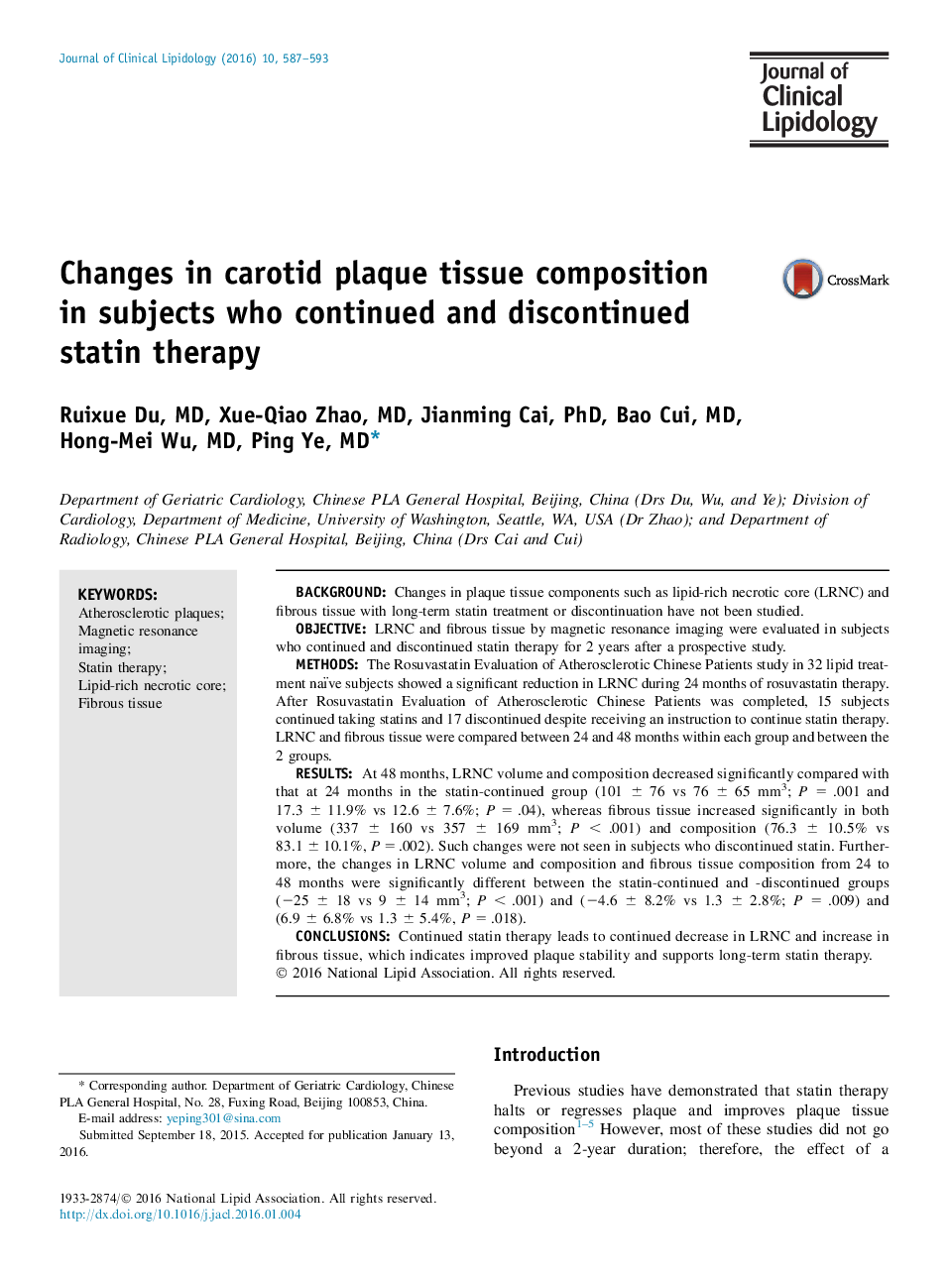| Article ID | Journal | Published Year | Pages | File Type |
|---|---|---|---|---|
| 5985314 | Journal of Clinical Lipidology | 2016 | 7 Pages |
â¢Lipid-rich necrotic core (LRNC) continued to decrease in statin-continued group.â¢Fibrous tissue increased significantly in subjects who continued statin.â¢Statin-discontinued group showed non-statistically significant increase in LRNC.â¢Fibrous tissue increase was not seen in subjects who discontinued statin.â¢Changes in LRNC and fibrous tissue were significantly different between the 2 groups.
BackgroundChanges in plaque tissue components such as lipid-rich necrotic core (LRNC) and fibrous tissue with long-term statin treatment or discontinuation have not been studied.ObjectiveLRNC and fibrous tissue by magnetic resonance imaging were evaluated in subjects who continued and discontinued statin therapy for 2 years after a prospective study.MethodsThe Rosuvastatin Evaluation of Atherosclerotic Chinese Patients study in 32 lipid treatment naïve subjects showed a significant reduction in LRNC during 24 months of rosuvastatin therapy. After Rosuvastatin Evaluation of Atherosclerotic Chinese Patients was completed, 15 subjects continued taking statins and 17 discontinued despite receiving an instruction to continue statin therapy. LRNC and fibrous tissue were compared between 24 and 48 months within each group and between the 2 groups.ResultsAt 48 months, LRNC volume and composition decreased significantly compared with that at 24 months in the statin-continued group (101 ± 76 vs 76 ± 65 mm3; P = .001 and 17.3 ± 11.9% vs 12.6 ± 7.6%; P = .04), whereas fibrous tissue increased significantly in both volume (337 ± 160 vs 357 ± 169 mm3; P < .001) and composition (76.3 ± 10.5% vs 83.1 ± 10.1%, P = .002). Such changes were not seen in subjects who discontinued statin. Furthermore, the changes in LRNC volume and composition and fibrous tissue composition from 24 to 48 months were significantly different between the statin-continued and -discontinued groups (â25 ± 18 vs 9 ± 14 mm3; P < .001) and (â4.6 ± 8.2% vs 1.3 ± 2.8%; P = .009) and (6.9 ± 6.8% vs 1.3 ± 5.4%, P = .018).ConclusionsContinued statin therapy leads to continued decrease in LRNC and increase in fibrous tissue, which indicates improved plaque stability and supports long-term statin therapy.
